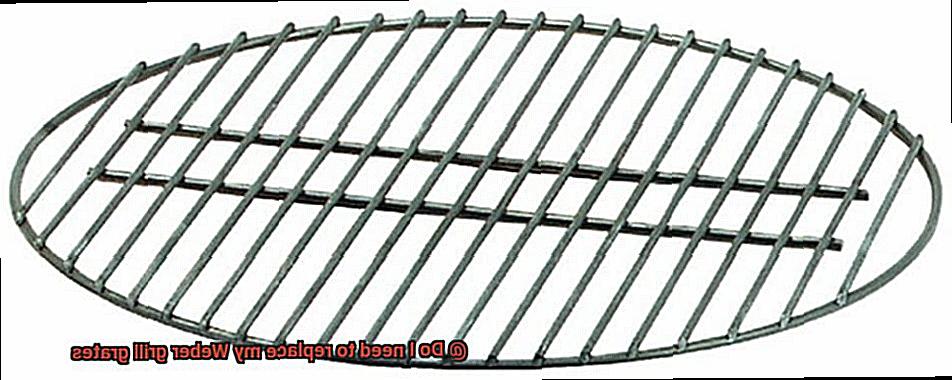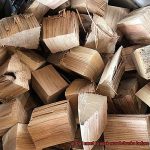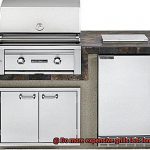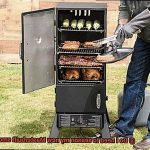Grilling is an art that requires the right tools, and nothing beats the heavenly taste of grilled meat, vegetables, and fruits on a Weber grill. But as a grill enthusiast, you might be wondering if it’s time to replace your Weber grill grates. After all, these grates play a crucial role in the quality of the food you prepare.
If you’re one of those curious minds, then you’ve come to the right place. In this article, we’ll delve into the telltale signs that can help you decide whether your Weber grill grates need replacing or not.
Before we dive in, let’s understand why grill grates are so important. They’re not just any old accessory; they’re the foundation of any Weber grill. Grill grates hold and distribute heat as it cooks your food, ensuring even cooking and high-quality results. Plus, they create those appetizing grill marks on your steak that make your mouth water.
But with constant use comes wear and tear. Over time, the quality of grates can deteriorate, which could impact the flavor and texture of your food and affect the longevity of your Weber grill.
So, if you want to keep producing delicious meals on your Weber grill without any hiccups, read on as we explore some signs and symptoms that indicate it’s time for new grates.
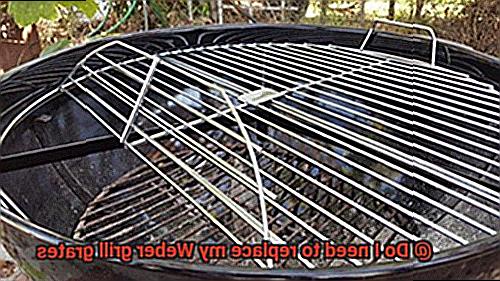
Contents
Signs that it’s Time to Replace Your Weber Grill Grates
That’s why it’s crucial to recognize the signs that indicate it’s time to replace your Weber grill grates. Here are the top signs to look out for:
- Rust and Corrosion: When your grill grates start showing significant rust or corrosion, it’s time to replace them. Rust can make the grates uneven and pitted, which can affect your cooking results and even pose a health hazard.
- Warped or Damaged Grates: If you notice that your food is cooking unevenly or that there are hot spots on your grill, check for warped or damaged grates. Dropping something heavy on the grates or exposing them to high heat for prolonged periods of time can cause them to become warped or damaged, making it difficult to cook food evenly.
- Difficulty Cleaning: If you find yourself struggling to clean your grill grates because they’re caked with grease and other debris, it’s a sign that they need replacing.
- Decline in Performance: If you’ve been using the same set of grates for several years and they no longer seem to be providing the same level of performance, it may be time to consider replacing them. This is especially true if you’re noticing a decline in cooking results compared to when the grates were new.
When replacing your Weber grill grates, consider factors like material, thickness, and size to ensure the best possible results. Stainless steel is a popular choice due to its durability and ease of cleaning. Thicker grates tend to retain heat better and provide more even cooking, while larger grates offer more cooking space.
Rust and Corrosion
As a grill master, there’s nothing quite as frustrating as discovering rust and corrosion on your beloved Weber grill grates. Not only does it make them look unappealing, but it can also impact the taste and quality of the food you’re cooking. Luckily, there are several ways to prevent and address these common issues.
To start, keeping your grill grates clean and dry is a fundamental step in preventing rust and corrosion. It may seem like a no-brainer, but many grill owners overlook this basic step. After each use, take a few minutes to wipe down your grates with a clean cloth or brush and store them in a dry place. This simple routine helps prevent moisture from building up and causing rust or corrosion.
Another easy preventative measure is to apply a thin layer of cooking oil to your grates before each use. This creates a protective barrier between the grates and elements, reducing the risk of rust and corrosion. The oil can also prevent food from sticking to the grates, making clean-up a breeze.
However, if you do notice rust or corrosion on your Weber grill grates, don’t fret. There are several cleaning solutions that can help remove it. A mixture of baking soda and water is an effective home remedy for scrubbing away rust or corrosion. Alternatively, you can use a commercial rust remover specifically designed for grill grates.
It’s essential to note that severe cases of rust or corrosion may require replacement of your Weber grill grates. That’s why regular inspection is crucial to catch any signs of damage early on. By taking action as soon as you notice an issue, you can prevent further damage and prolong the life of your grates.
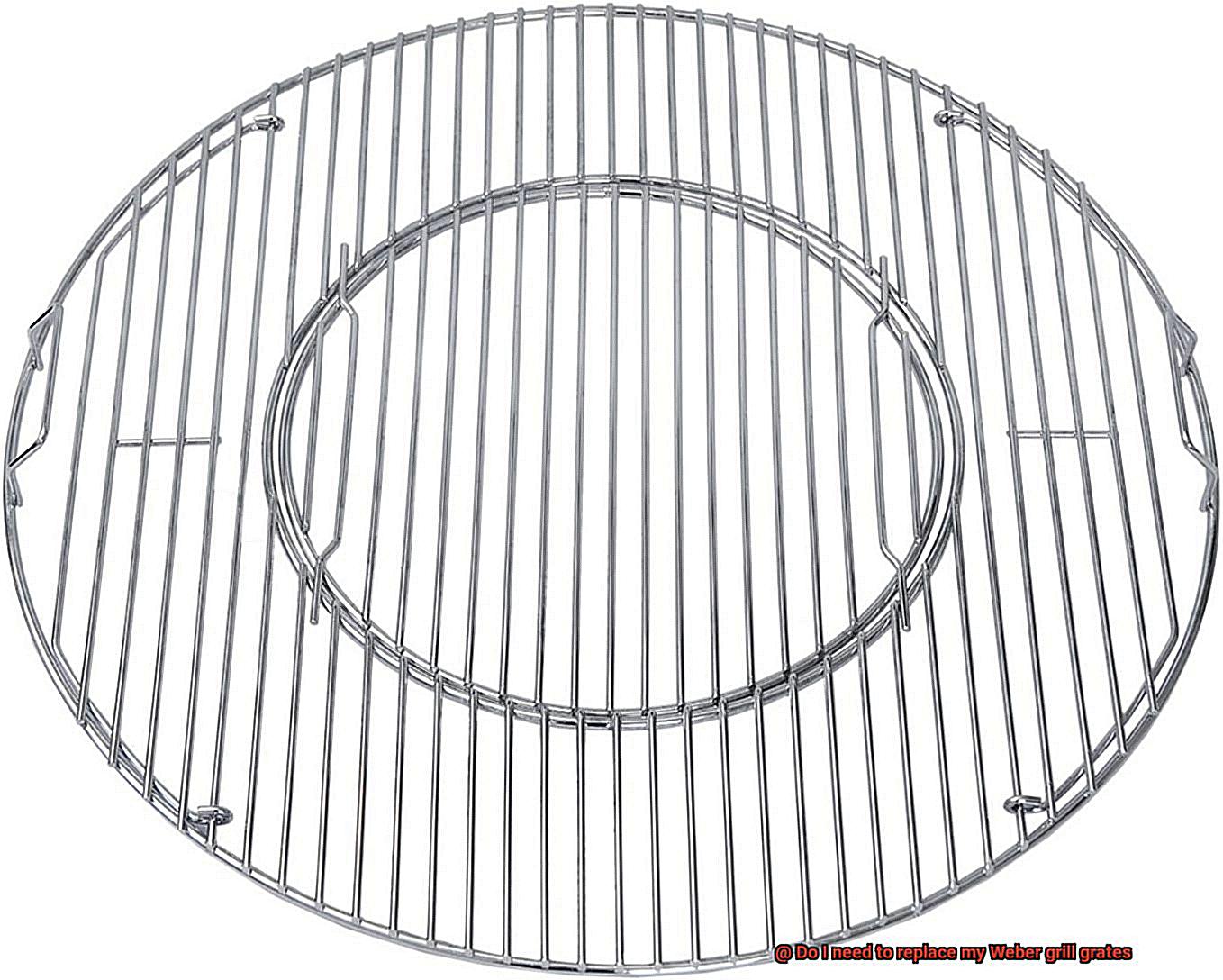
To summarize, preventing rust and corrosion on your Weber grill grates is vital for maintaining their quality and performance. Here are some tips to keep in mind:
- Keep them clean and dry after each use
- Apply cooking oil before each use
- Use appropriate cleaning solutions when necessary
- Regularly inspect for signs of damage
Warping and Damage
If so, you know that having high-quality grill grates is essential to achieving that delicious, mouth-watering flavor. But what happens when your Weber grill grates become warped or damaged?
Warping and damage are common issues that can occur with Weber grill grates over time. Exposure to high heat and moisture are culprits that can cause your grates to warp or become damaged, leading to uneven cooking and difficulty achieving the desired results.
High heat exposure is one of the most common causes of warping. Cooking at high temperatures for extended periods can cause your grates to bend out of shape, making it difficult to achieve that perfect sear on your steak or pizza.
Moisture is another issue that can lead to warping and corrosion. When your grill grates are exposed to moisture for too long, they can rust or corrode, weakening the metal and making it more prone to warping or bending.
Daily wear and tear can also take its toll on your grill grates. Scratches, dents, and other types of damage can affect the performance of your grates, making it difficult to cook evenly. That’s why it’s important to regularly inspect your grill grates for signs of wear and tear.
So what can you do to prevent warping and damage? Keep your grill grates clean and dry, apply cooking oil before each use, and use appropriate cleaning solutions when necessary. Regular maintenance is key in ensuring that your grill is performing at its best.
If you do notice significant warping or damage, it may be time to replace your grates. But don’t worry – choosing a high-quality replacement that is specifically designed for your Weber grill model will have you back up and grilling in no time.
Difficulty Cleaning
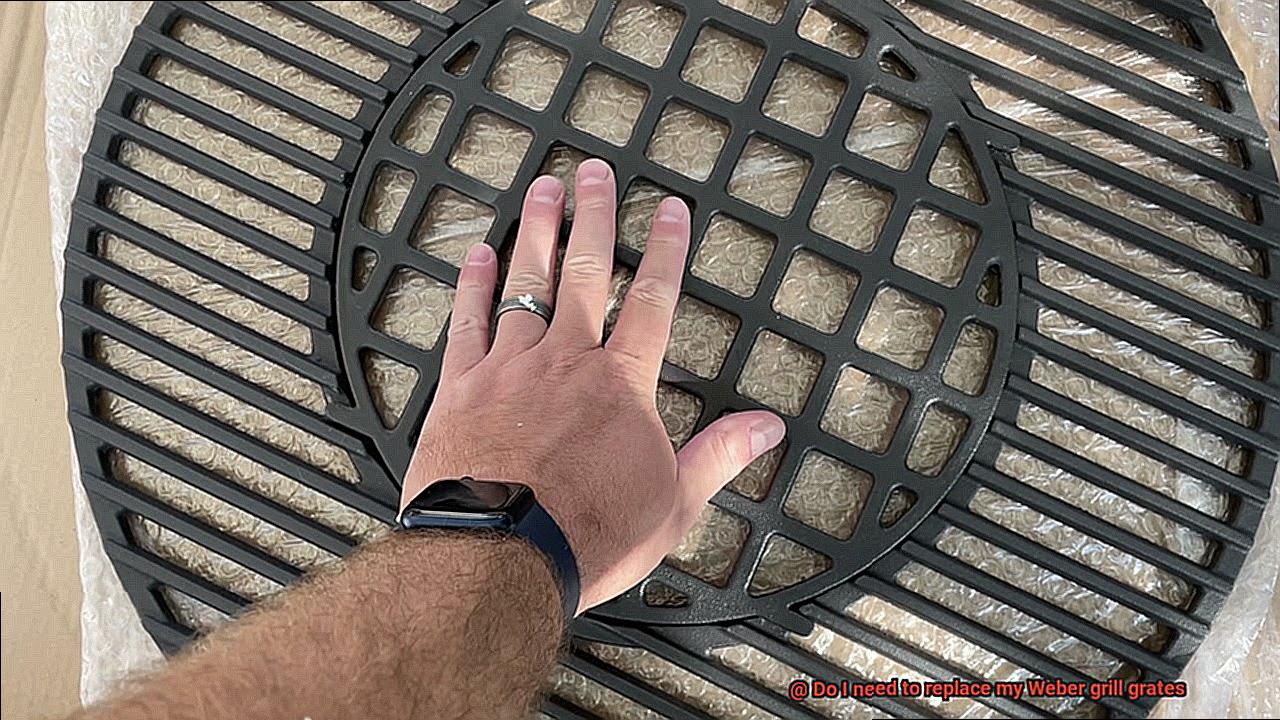
As an expert on the matter, I’m here to provide some insights into why cleaning these grates can be challenging and how you can overcome these difficulties.
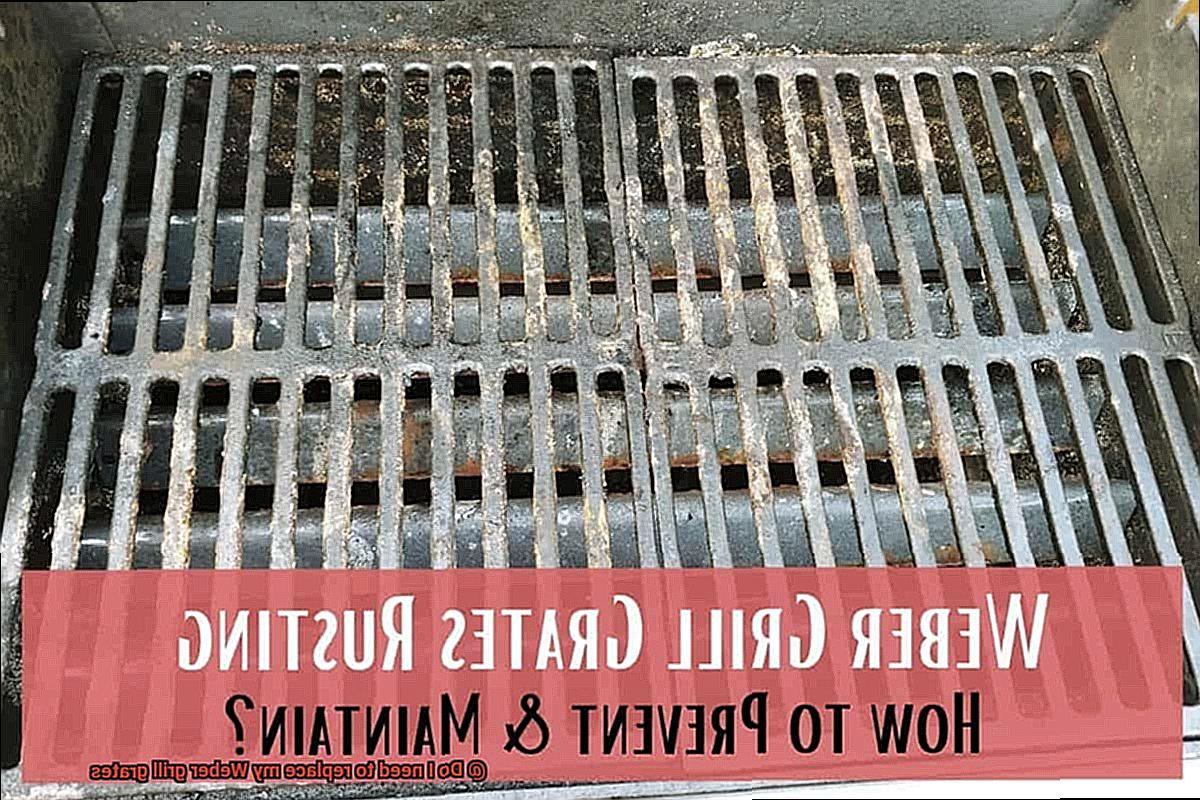
Firstly, the frequency of cleaning is a crucial factor in determining the difficulty of cleaning Weber grill grates. If you allow a lot of build-up to accumulate over time, it can become quite challenging to remove. Therefore, it’s recommended that you clean your grates after every use to make your job easier.
Another factor to consider is the type of food you’re cooking. If you’re mostly grilling lean meats like chicken or fish, your grates will likely stay relatively clean and easy to maintain. However, if you’re cooking fatty meats or foods with a lot of marinade or sauce, all that residue can quickly build up and make it much harder to clean.
The material of your grill grates is also a critical factor that affects how easy they are to clean. Weber offers grill grates in different materials, such as stainless steel, porcelain-coated cast iron, and plated steel. Each material has its pros and cons, but some may be easier to clean than others.
If you find that despite doing everything right, cleaning your Weber grill grates is still a challenge, it may be time to replace them. Over time, even with regular maintenance and cleaning, grill grates can become worn down and lose their effectiveness. So if you notice any signs of damage like rust or warping or if they are no longer providing consistent cooking experiences, investing in some shiny new ones might be a good idea.
Factors to Consider When Choosing Replacement Grill Grates
There are several factors to consider when choosing the perfect replacement grill grates that will suit your grilling needs.
First and foremost, it’s crucial to ensure that the replacement grates are compatible with your specific Weber grill model. Weber offers a wide range of grills, and not all replacement grates will be a perfect fit for every model. Make sure to double-check before making a purchase.
The material of the replacement grates is another essential consideration. Weber offers replacement grates in stainless steel, cast iron, and porcelain-enameled cast iron. Stainless steel is durable and easy to clean, but it doesn’t retain heat as well as cast iron. Cast iron is perfect for searing and retaining heat but requires more maintenance compared to stainless steel. Porcelain-enameled cast iron offers the best of both worlds; it retains heat like traditional cast iron but is easier to clean and maintain.
The shape of the replacement grates is also crucial. Round grates are typically used for charcoal grills, while rectangular grates are used for gas grills. Choosing the correct shape based on your grill type is important to ensure optimal performance.
Finally, consider the size of the replacement grates. Weber offers replacement grates in various sizes to fit different grill models and cooking needs. It’s essential to measure your current grates and choose replacements that match the dimensions perfectly.
Size of the Grates
Well, one often overlooked aspect of grilling is the size of the grates on your Weber grill. But fear not, as an expert in all things Weber grill-related, I’m here to guide you through this important topic.
First and foremost, let’s talk safety. Ill-fitting or loose grates can not only lead to uneven cooking but also pose a potential hazard. So, make sure that your grates fit snugly into your grill to prevent any accidents while cooking. This is a crucial consideration when deciding whether your grates need replacing.
Next up is the actual size of your grates. Over time, due to wear and tear, grates can become warped or damaged, affecting their size and shape. This can cause food to cook unevenly and lead to frustration for even the most experienced grillers. If you’re experiencing this issue, it’s definitely time for new grates.
Moreover, the amount of food you typically cook is another essential factor to consider. If you find yourself running out of space on your current grates, consider upgrading to larger ones. This will allow you to cook more food at once and make your grilling experience more efficient.
Material of the Grates
As a seasoned grill expert, I can tell you that choosing the right grates can make all the difference in your cooking experience.
First up, let’s talk about stainless steel grates. These are a popular choice due to their durability and ease of maintenance. They’re resistant to rust and won’t affect the taste of your food. Plus, they’re a breeze to clean – just brush them off after use, and you’re good to go. However, they don’t retain heat as well as cast iron, which can lead to uneven cooking.
Now, let’s turn our attention to cast iron grates. These are the go-to for many grill enthusiasts due to their excellent heat retention and ability to create beautiful sear marks. Plus, they improve with age as they develop a natural non-stick coating. However, they require more maintenance than stainless steel grates and can rust if not cared for properly.
When it comes down to it, choosing between stainless steel and cast iron grates depends on your personal preferences. If you prioritize easy maintenance and durability, stainless steel is the way to go. But if you want the best possible sear marks and heat retention for a perfect steak every time, cast iron is the winner.
Regardless of which type of grate you opt for, proper care and maintenance are crucial to ensuring optimal performance and longevity. Regular brushing and oiling before and after each use will prevent rust and help prolong their lifespan.
Cost of Replacement Grates
As a seasoned expert in the grilling game, I’m here to give you the inside scoop on the cost of replacement grates for your Weber grill.
Before we dive into the nitty-gritty, let’s address the elephant in the room: do you even need replacement grates? If your grates are worn down or damaged beyond repair, then it’s time to start considering replacement options.
Now, onto the cost. Several factors can affect the price of replacement grates, including the size and model of your grill and the material of the grates themselves. Weber offers a variety of replacement grates made from different materials, ranging from stainless steel to porcelain-enameled cast iron to plated steel.
Stainless steel grates are generally the most expensive option, but they offer unbeatable durability and long-lasting performance. Porcelain-enameled cast iron grates are also a popular choice due to their even heat distribution and easy-to-clean surface. For those on a budget, plated steel grates are the least expensive option, but they may not last as long as other materials.
So, how much can you expect to fork over for replacement grates? Prices can range from around $20 for plated steel grates to upwards of $100 or more for stainless steel or porcelain-enameled cast iron grates. But don’t forget to factor in shipping costs and any additional fees that may apply when purchasing replacement grates.
It may be tempting to opt for the cheapest option available, but investing in high-quality replacement grates can save you money in the long run by providing superior durability and performance. Consider your specific needs and preferences when making a decision.
ZVoaGzaw6tI” >
Conclusion
In conclusion, Weber grill grates are the unsung heroes of any backyard BBQ. They play a vital role in creating those perfect sear marks, evenly distributing heat, and delivering mouth-watering results. However, with constant use and exposure to the elements, it’s only natural for wear and tear to take its toll.
Signs that your Weber grill grates need replacing include rust and corrosion, warping or damage, difficulty cleaning, and a decline in performance. Don’t let these issues ruin your next cookout. Instead, invest in high-quality replacement grates that will provide superior durability and performance.
When selecting new grill grates, consider factors such as material (stainless steel or cast iron), thickness, size, and compatibility with your specific Weber grill model. Stainless steel is an excellent choice for its ease of cleaning and durability. Cast iron offers superior heat retention but requires more maintenance than stainless steel.
While cheaper options may seem appealing initially, investing in quality replacement grates can save you money in the long run by avoiding costly repairs or replacements down the line.
Proper care and maintenance are essential to ensuring optimal performance from your Weber grill grates. After each use, make sure to clean them thoroughly to prevent rust buildup or damage from affecting their quality. By following these tips and recognizing the signs that indicate it’s time for new grates, you’ll be able to keep producing delicious meals on your Weber grill without any hiccups.

